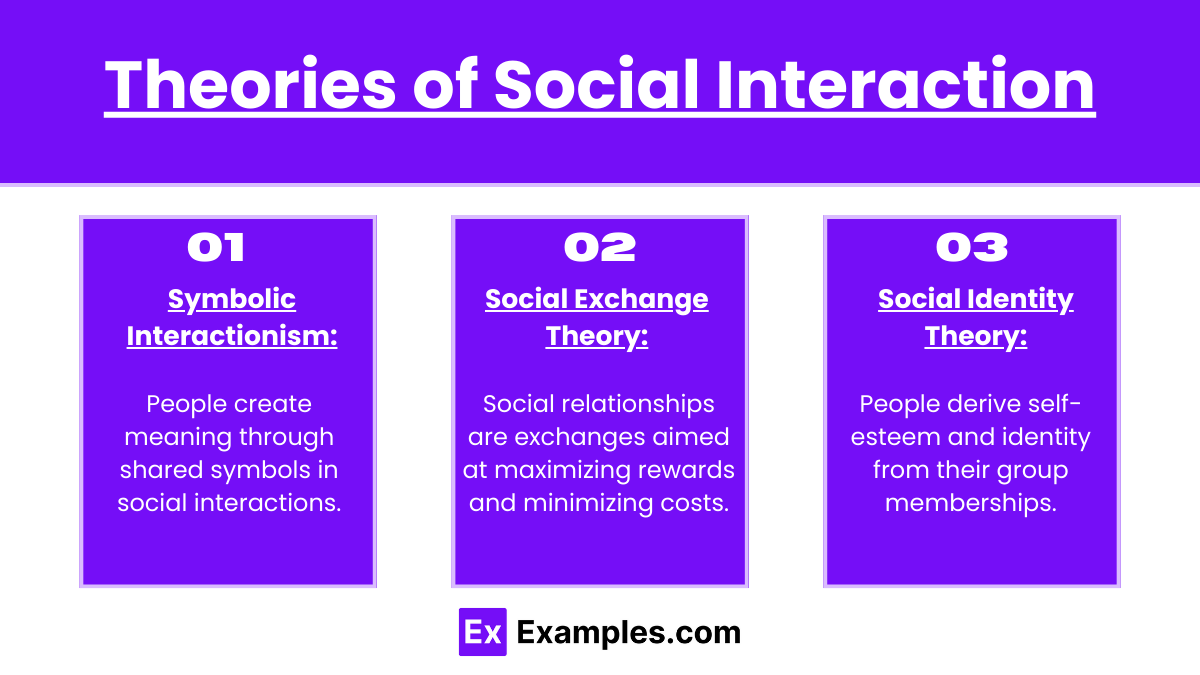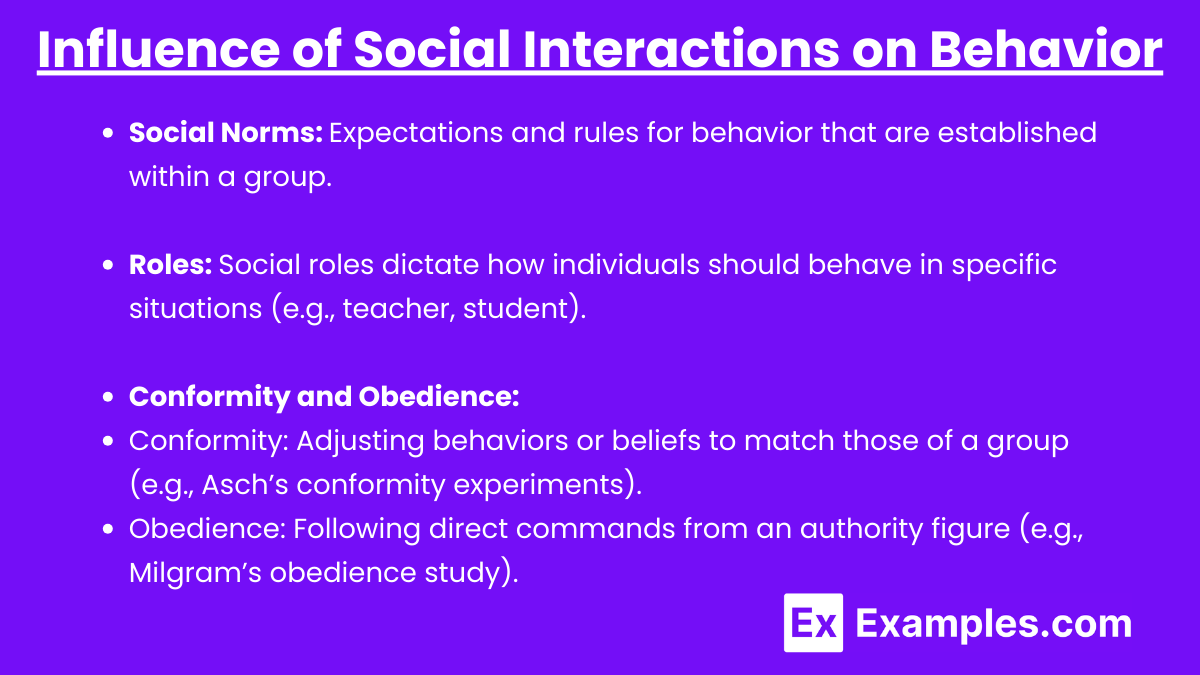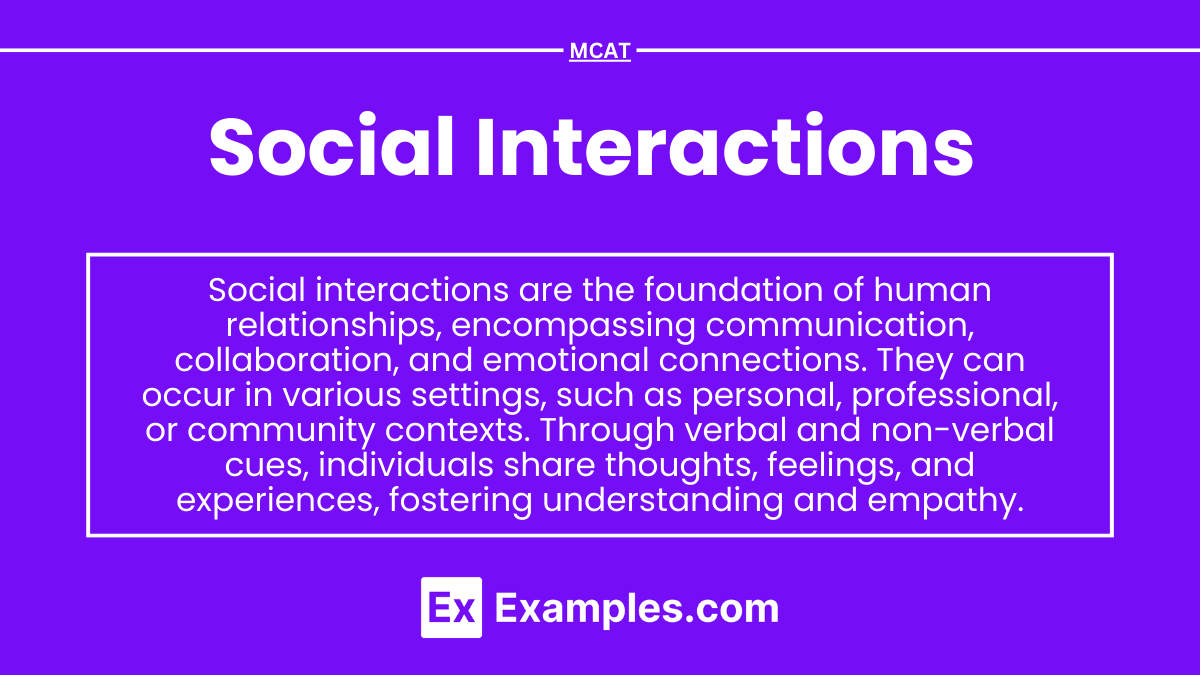Social interactions are fundamental to human existence, shaping our relationships and influencing behavior. They encompass a wide range of activities, from casual conversations to complex group dynamics, and play a crucial role in our emotional and psychological well-being. Understanding social interactions involves exploring verbal and nonverbal communication, social norms, and cultural influences. By studying these interactions, we can gain insights into how individuals connect, collaborate, and navigate their social worlds, ultimately enhancing our ability to foster meaningful relationships.
Learning Objectives
In the topic of “Social Interactions” for the MCAT, you should focus on several key learning objectives to enhance your understanding of social behavior and its implications. First, familiarize yourself with the principles of social psychology, including how social norms and group dynamics influence individual actions and decision-making processes. Examine the role of socialization in shaping personal identity and cultural values, and understand how interpersonal relationships affect emotional and psychological well-being. Additionally, study theories such as social cognition, which explains how individuals perceive and interpret social interactions, and attribution theory, which examines how people attribute causes to their own and others’ behaviors. Lastly, explore research methodologies used in social psychology, such as experiments and observational studies, to critically evaluate the evidence behind social behavior theories.
1. Social Interaction

- Definition: Social interaction involves the ways in which individuals communicate and behave with one another. It is fundamental in understanding human behavior and the social context of actions.
- Types:
- Verbal Communication: Exchange of spoken or written messages.
- Non-Verbal Communication: Body language, gestures, facial expressions, and tone of voice.
- Symbolic Interaction: Interaction based on the meanings that people assign to symbols and actions.
2. Theories of Social Interaction

- Symbolic Interactionism:
- Focuses on the subjective aspects of social life, how individuals interpret and give meaning to their interactions.
- Key concepts include roles, symbols, and the social construction of reality.
- Social Exchange Theory:
- Suggests that social behavior is the result of an exchange process to maximize benefits and minimize costs.
- Emphasizes reciprocity and the balance of rewards and costs in relationships.
- Social Identity Theory:
- Examines how group membership influences self-perception and behavior.
- Highlights the importance of in-group vs. out-group dynamics and the effects of social categorization.
3. Influence of Social Interactions on Behavior

- Social Norms: Expectations and rules for behavior that are established within a group.
- Roles: Social roles dictate how individuals should behave in specific situations (e.g., teacher, student).
- Conformity and Obedience:
- Conformity: Adjusting behaviors or beliefs to match those of a group (e.g., Asch’s conformity experiments).
- Obedience: Following direct commands from an authority figure (e.g., Milgram’s obedience study).
Examples
Example 1 : Networking Events
Professional networking events provide a platform for individuals to connect with others in their field. Participants engage in conversations, share experiences, and exchange contact information, fostering relationships that can lead to job opportunities, collaborations, or mentorships. These interactions help build a community where members can support each other professionally.
Example 2 : Team Collaborations
In a workplace setting, team collaborations often involve brainstorming sessions and group projects. Team members share ideas, provide feedback, and leverage each other’s strengths to achieve common goals. This social interaction not only enhances productivity but also promotes a sense of belonging and teamwork, leading to better outcomes.
Example 3 : Community Service
Volunteering for community service initiatives is another way to utilize social interactions. Individuals work alongside others to address local issues, such as environmental clean-ups or food drives. These experiences foster connections among participants, create a sense of purpose, and strengthen community ties, promoting a collective effort towards social good.
Example 4 : Online Forums and Social Media
Engaging in online forums or social media platforms allows individuals to interact with a diverse audience. Whether discussing common interests, seeking advice, or sharing personal experiences, these interactions can lead to the formation of virtual communities. They facilitate knowledge exchange and provide emotional support, enhancing individuals’ social networks beyond geographical limitations.
Example 5 : Cultural Exchange Programs
Cultural exchange programs enable participants to interact with people from different backgrounds and cultures. Through activities such as homestays, language exchanges, or workshops, individuals learn about each other’s traditions, values, and perspectives. These social interactions foster cross-cultural understanding, promote tolerance, and build friendships that transcend borders.
Practice Questions
Question 1
Which of the following best describes the role of social interactions in building relationships?
A) They create competition among individuals.
B) They foster communication and understanding.
C) They are only relevant in professional settings.
D) They eliminate the need for personal boundaries.
Answer: B) They foster communication and understanding.
Explanation: Social interactions are fundamental in establishing and nurturing relationships. They allow individuals to share thoughts, feelings, and experiences, promoting empathy and mutual understanding. Option A is incorrect because social interactions often reduce competition by encouraging collaboration. Option C is misleading, as social interactions are important in both personal and professional contexts. Option D is false, as healthy social interactions respect personal boundaries.
Question 2
What is the primary benefit of engaging in team collaborations in a workplace setting?
A) Increased competition among coworkers.
B) Improved individual performance only.
C) Enhanced creativity and problem-solving.
D) Reduced communication among team members.
Answer: C) Enhanced creativity and problem-solving.
Explanation: Team collaborations harness the diverse skills and perspectives of members, leading to innovative solutions and creative approaches to problems. This collective effort can outperform individual contributions. Option A contradicts the collaborative nature of teamwork, while Option B overlooks the group dynamic that contributes to overall performance. Option D is incorrect, as effective team collaborations improve communication rather than reduce it.
Question 3
Which of the following scenarios illustrates social interactions that enhance community ties?
A) Attending a concert alone.
B) Volunteering at a local charity event.
C) Browsing social media in isolation.
D) Working overtime without socializing.
Answer: B) Volunteering at a local charity event.
Explanation: Volunteering at a charity event involves individuals working together towards a common cause, which strengthens community bonds and fosters a sense of belonging. Option A reflects solitary engagement and does not promote interaction. Option C describes a passive activity that lacks meaningful social connections. Option D emphasizes individual work without interaction, contradicting the essence of community engagement.


